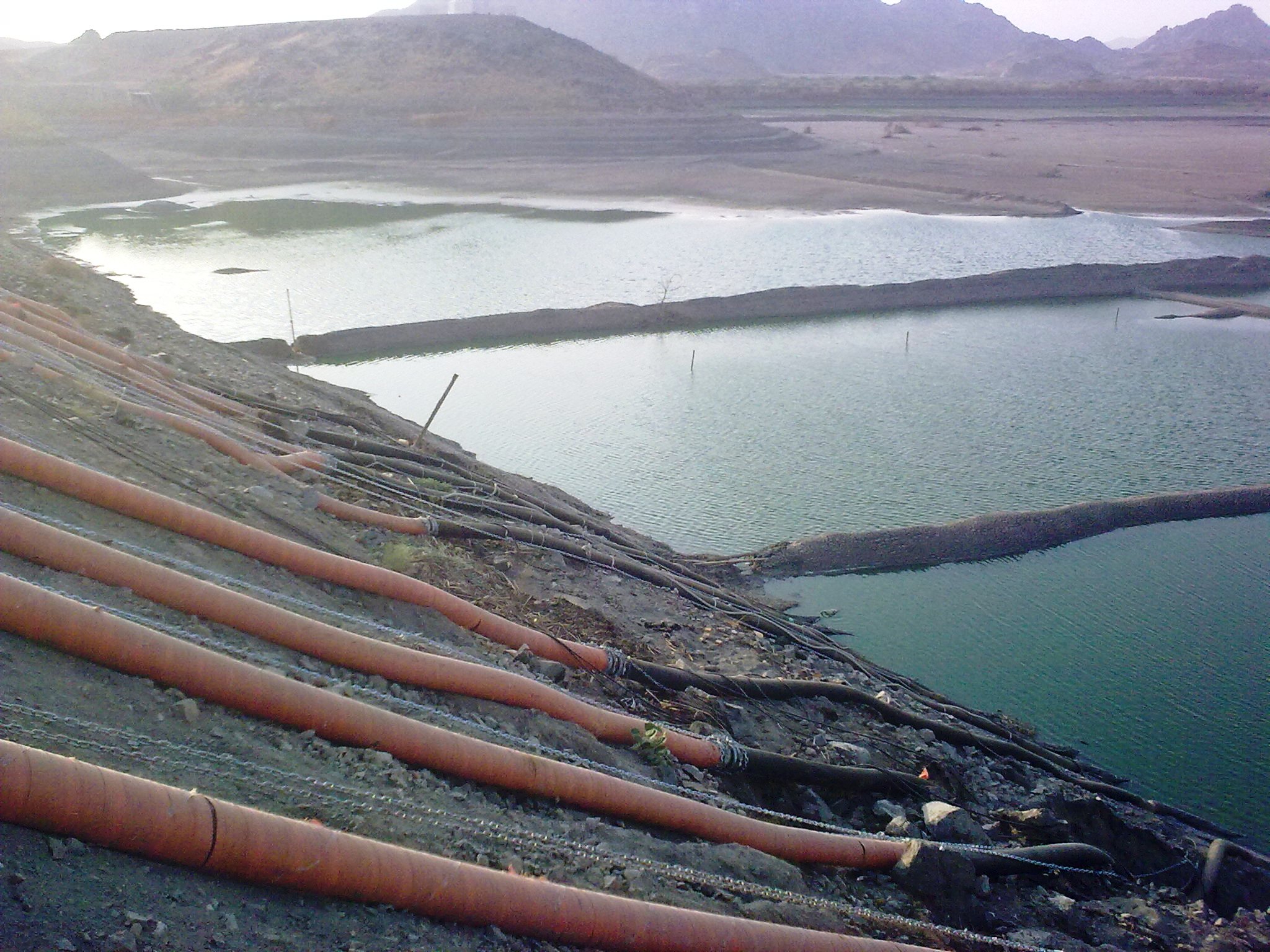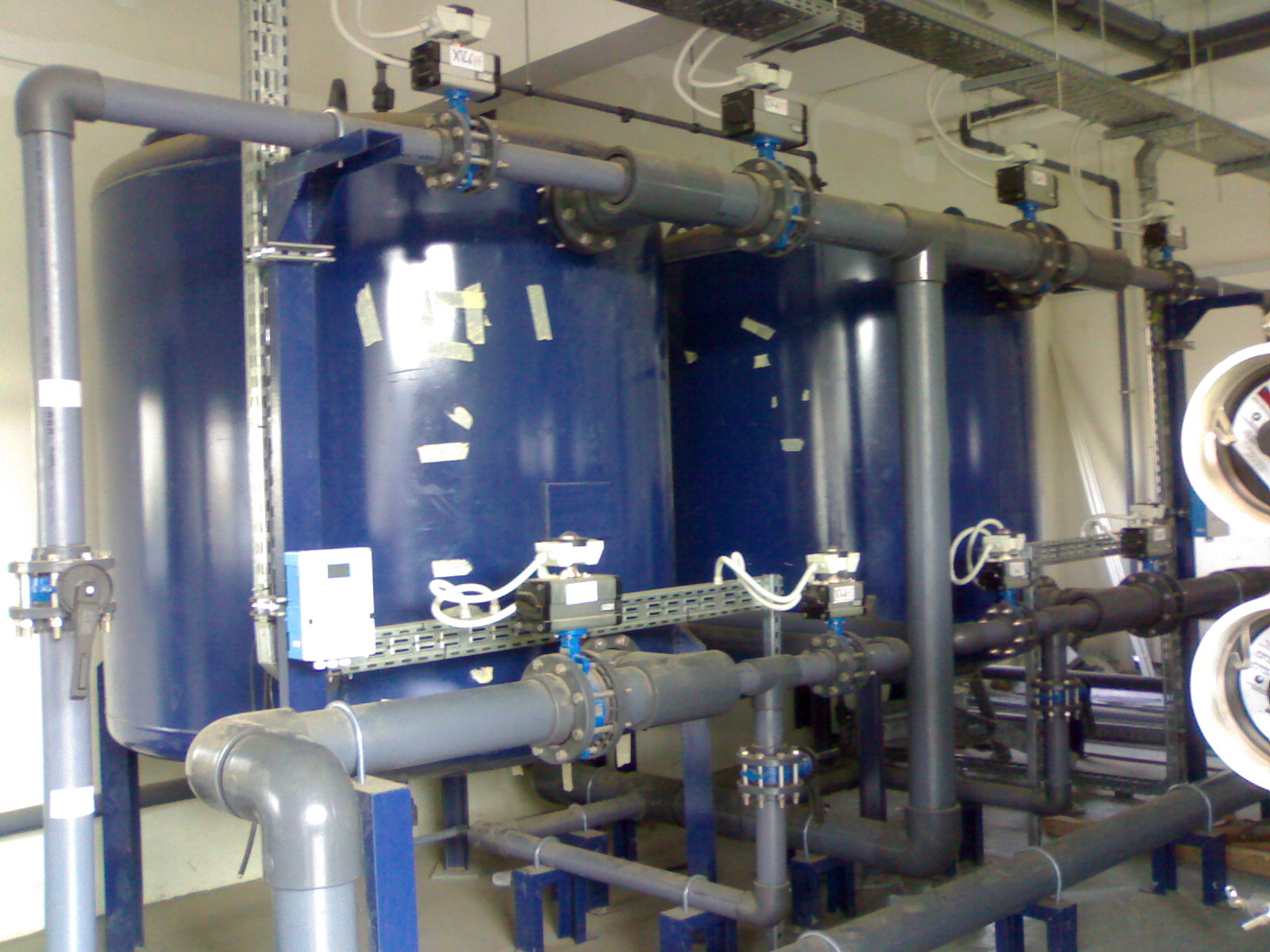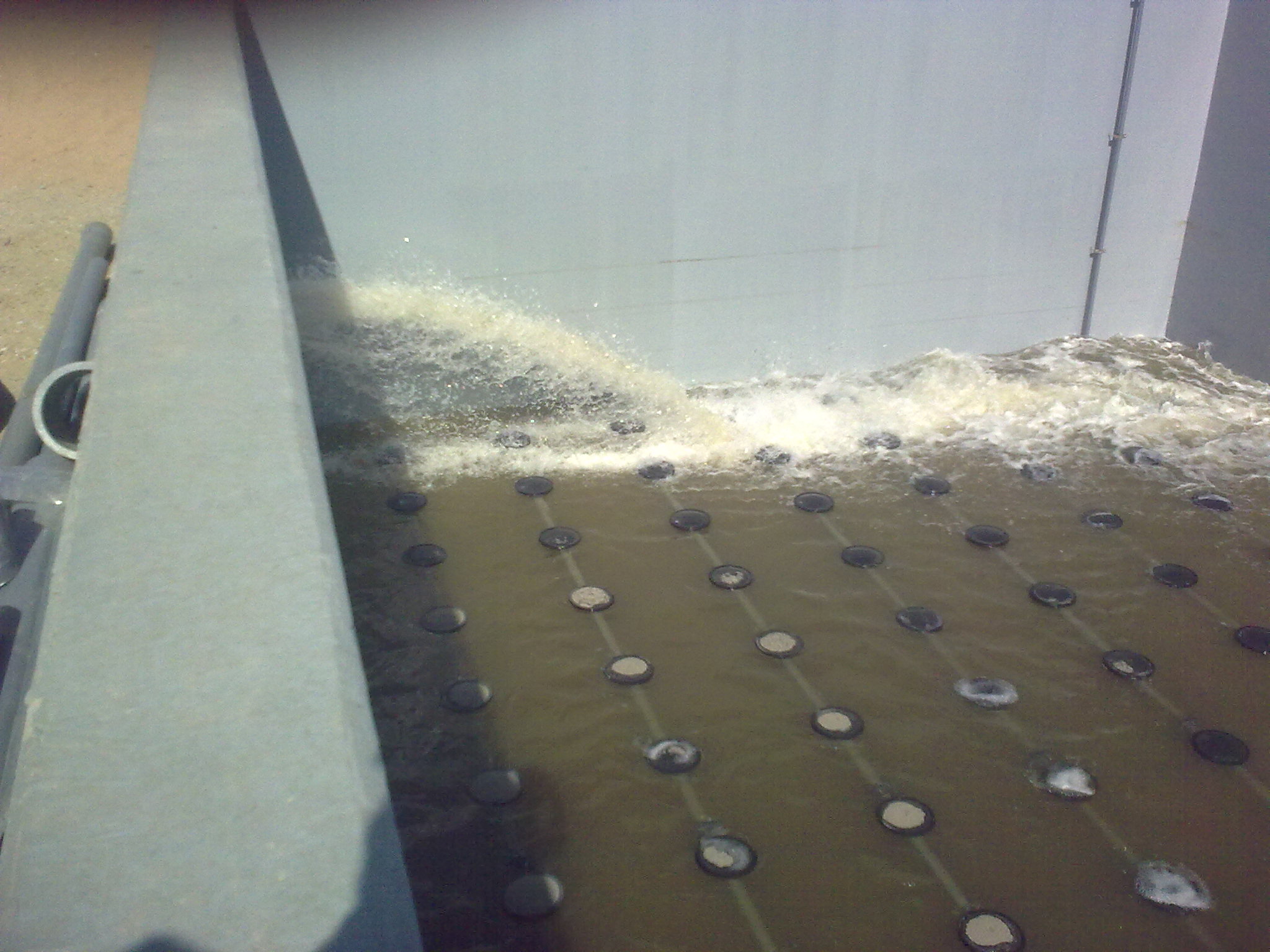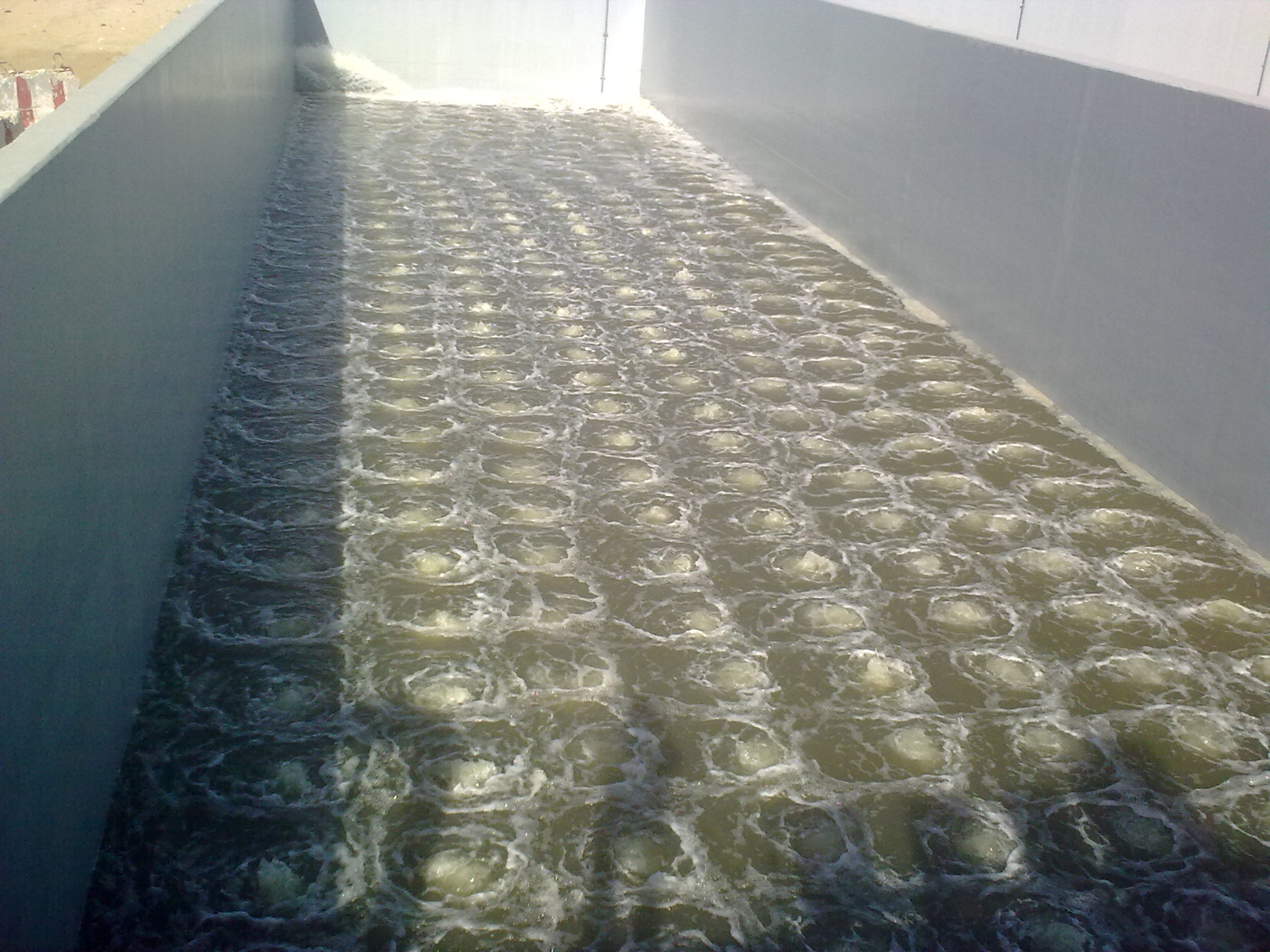MISK PROJECT-BRIMAN VALLEY IN JEDDAH, KSA |
EPC of MBR 30,000 m3/day and upgrading the existing 30,000 m3/day STP Conventional. The MBR plant consists of a new equalization tank, anoxic tank, aeration tank, and MBR tank. For the existing STP conventional SKME installed a new primary sedimentation, sludge receiving tank, and Anoxic tank, and refurnished and retrofitted, the existing Aeration and secondary clarifier tanks .
The purpose of this STP is to treat waste water up to re-use quality for irrigation. The raw water has two sources :
1-Briman sewage lake
2-Sewage coming from the city of Jeddah via dumper trucks.
The two sources of sewage are mixed in the equalization tank. This plant has treated approximately 4 million cubic meter of waste water from the sewage lake. After the lake dried up, this STP exclusively treats sewage for Jeddah city sent via trucks. The 30,000 m3/day MBR STP is considered in KSA the largest flat sheet MBR plant till the moment. This project played an integral role for Briman's sewage lake problem, which posted a great environmental, health, and social danger, especially if the dam was breached with the unexpected recent floods these past few years. The dam was constructed without anticipation of the floods. SKME is grateful and proud to be able to contribute in eliminating this danger .
The Block Flow:
Trucks dump raw water into the equalization tank in the dumping area of the plant. The equalization tank stabilizes the flow of water, and transfers 30,000 cubic mtr to the STP conventional, and 30,000 cubic meter per day to the MBR STP. The STP conventional consists of primary settling tanks, Anoxic tank (for the removal of nitrogen), and secondary clarifier. The MBR STP consists of Anoxic+Aeration, in one common tank, and a MBR tank. The two STP plants share a common product water tank .
Water Analysis Summary:
SKME utilized Toray flat sheet membray for the MBR in order to get a high quality product water, low operation cost, easy O&M, and space saving. The MBR STP was less than half the size of the STP Conventional. It was a good economical choice that made both parties happy. The raw water BOD is 400 and the required was 10 and below . |
TOTAL RECYCLING & RE-USED PLANT FOR NATIONAL FOOD INDUSTRY CORPORATION (LUNA)-JEDDAH, KSA |
NFIC wanted to find a solution for the 1700 m3/day waste water it sends to the sewer. The waste water comes from over 10 different steams from a diary factory that produces UHT milk, juices, condensed milk, canned beans , canned vegetables etc.
Suido Kiko Middle East designed a comprehensive waste water treatment solution for this factory.
NFIC was trying in vain to source an engineering company that could design and implement such solution for the last 10 years.
SKME took the challenge and started with a detailed study of the waste streams of this factory. Later the waste was divided into organic and inorganic streams.
In turn the organic streams were subdivided into hi-load and low -load streams.
Then a solution was designed for the two main streams : Inorganic and Organic.
The result was a state-of-the –art fully automated plant that took all the 1700 m3/day waste streams and returned around 1450 m3/day treated re-used water that the factory could use. Hence, NFIC reduced its intake of water made use of its re-cycled water.
The plant entered operation in Nov 2010 and yielding good results.
This was an excellent engineering solution from SKME and lateral thinking from NFIC for investing in treating waste for both economic and environmental reasons.
We are pleased to say that the client substantially reduced its purchased intake of water by making use of its re-cycled water produced by the plant, thu considerably reducing its expenses.
To our knowledge this is the first plant that is ever designed and implemented in the Middle East for the purpose of full re-use application for a dairy factory. |
This project calls for the secondary treatment of :
25,000 m3/day of Municipal (Domestic) Waste Water Stream
25,000 m3/day of Combined Industrial Waste Water Stream
Municipal and industrial streams are offloaded separately in two dumping areas ( North and South Pits) via sewage tankers .
All sewage trucks are screened before they are allowed to dump their loads in order to avoid hi-toxic industrial waste entering the plant .
Industrial waste goes through pre-treatment inlet and from there into the equalization tank. From Equalization tank it goes to primary clarifiers and into aeration tanks.
Municipal waste goes through its own pre-treatment inlet and into the equalization tank and from there it mixes with the industrial stream right after the primary clarifiers and the mixed stream goes to the aeration tanks .
Both streams are combined and mixed in the aeration tanks and from there the mixed stream goes to the secondary clarifiers. For advanced secondary treatment the mixed streams also flow through anoxic and anaerobic tanks for nutrient and nitrogen removal
The resultant effluent is of a advanced secondary treated grade. |
| 1-Sewage Treatment Plant (6000 m3/day) Using Membrane BioReactor Technology The 6000 project as it’s known right now has a capacity of 6000 m3/day and can easily be upgraded to 8000 m3/day just by adding MBR Modules. The University had an existing STP in the 90s and it had been out of service since then. SKME proposed the use of the existing circular tanks previously used as clarifiers to be used as a complete system including equalization, aeration, filtration and anoxic. SKME is the first in the world to implement the MBR system in circular tank. This of course comes from SKME’s quest to save the environment and to cut all costs in maintaining economic solutions. The project is currently in the commissioning phase and the treated water is well within guaranteed parameters which are extremely strict in comparison with all MBR systems since BOD and TSS are maintained less than 3 mg/L. The footprint of this plant is 60% of the old STP while the capacity is 4 times the old capacity.
2-Sewage Treatment Plant (500 m3/day) Using Membrane Bioractor Technology
This plant is located in the Marine Science College in North Obhur in Jeddah. The function of this STP is to serve the residence and offices in the college. Special measures have been taken to the material selection and painting in this STP due to the sites location which is only a few meters away from the sea. The project is 90% completed at this phase and just awaiting final steps.
3- Hardness Removal Plant (100 m3/day) Using Reverse Osmosis Technology
The diversity of projects of SKME is essential to the Wastewater Treatment Area and to the company as well as we strive for solutions in all areas of sewage treatment, industrial wastewater treatment, and desalination. This plant has a capacity of 100 m3/day and is used to supply the boiler for King Abdulaziz University Hospital Boiler and is used for disinfection. The RO plant uses the MBR treated effluent water as its influent water, which results in a very purified water with a very low TDS, mineral, and chemical composition, which is well suited for disinfection and Hospital boilers. |
UQU project consists of providing a sewage treatment plant with a capacity of 1,400 m3/day to treat the waste water of the university in Mekkah. The new STP will be built at the same location of an old STP where some parts such as the lifting station, control room and equalization tank will be used by the new STP as well as some equipment such as Air Blowers. SKME will provide the remaining equipment and tanks to be used in the system. The process starts with a lifting station up to the equalization tank to absorb any fluctuation and peak flow hours. Then it will be evenly distributed over 4 trains (350 m3/day each) and using the advanced technology of Membrane Bio-Reactor (MBR) the effluent will have no suspended solids and a BOD concentration of less than 10 mg/L. Excess sludge will be collected in a tank and digested using Air Diffusers. |
Preface:
SOJECO is sea water desalination plant located along Corniche Road in Khomra District, Jeddah approximately 25 km from naval base, occupying a total area of 22,000 sq.m. The total area consists of water desalination plant building including (reject and break tanks, head cranes, electrical and control rooms), four product water tanks with total capacity of 10,000 meter cube, accommodation, power generation house, water filing stations, dispatch office, security & guard room, offices and parking.
The desalination plant operates 24 hours a day (52 weeks a year). Please click here for more information.
Treatment technology:
Micro filtration system
Reverse Osmosis membranes.
Control & monitoring technology:
PLC Systems with SCADA
Capacity and product water quality:
10,000 (4x2500) cum/day of safe water for drinking, domestic and industrial applications.
R.O. system configuration:
Desalination system consists of raw seawater intake from 10 beach wells, Micro filtration (MF) system adopted for RO pre-treatment, SWRO system composed of 4 operating units (each unit includes 30 pressure which contain 6 elements), Boron Removal system composed of 4 operating units. Each unit includes 6 pressure vessels which contain 6 elements, chemical dosing system and control room.
Water distribution systems:
By food grade tankers SS 316L
Future expansion:
Two R.O. units, each one is 6,000 cum/day of safe water. |
|
|





